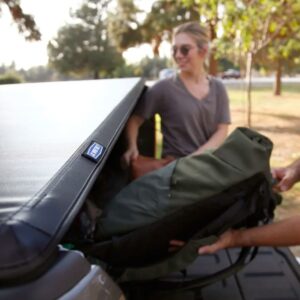Seat covers are a nifty accessory that prevents your vehicle seats from taking damage while simultaneously making them look good and feel more comfortable. These covers come in many shapes and sizes, each made of different materials that give them unique properties.
Let’s take a closer look at how these materials differ to help you decide which is best for your vehicle.
Neoprene Seat Covers

One of the most common materials used to create high-quality seat covers is neoprene. This durable, flexible material is specially designed to resist both environmental and chemical damage.
Neoprene seat covers are so durable that they work well in almost any climate, withstanding temperatures as low as -40°F and as high as 248°F.
Key Characteristics
- Impermeable, effectively making it waterproof, easy to clean, and effective at preventing moisture build-up.
- Insulating material designed to absorb and retain heat.
- Elastic and flexible, making it fit and adapt to the shape of car seats very well.
- Durable and resistant to damage from chemicals and UV light.
Tweed Seat Covers
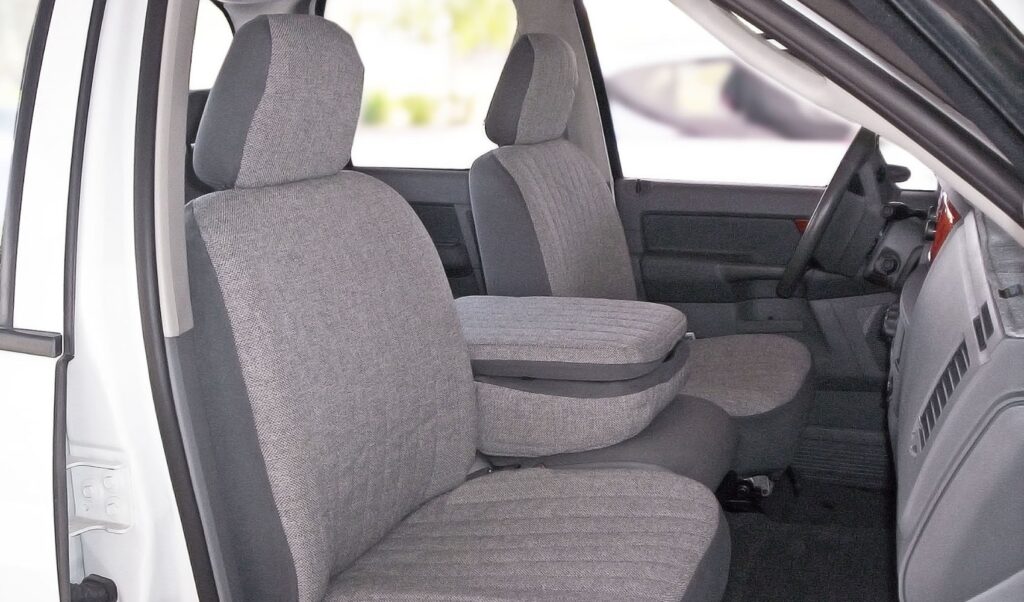
Another material worth keeping an eye on for seat covers is tweed – a woven fabric made of wool fibers.
It’s effective at keeping surfaces warm and comfortable and it is also water-resistant, making it an excellent choice for protecting seats.
Tweed seat covers are typically tailor-made to fit a vehicle so it’s best to keep an eye on the dimensions available in our catalog.
Key Characteristics
- Built to last and covers the entirety of the seat.
- Easy to work with and install, making for quick and convenient seat covers.
- The pleasant appearance and texture make for a satisfying, comfortable choice.
- UV-resistant, insulating, and capable of withstanding damage from the weather.
Velour Seat Covers
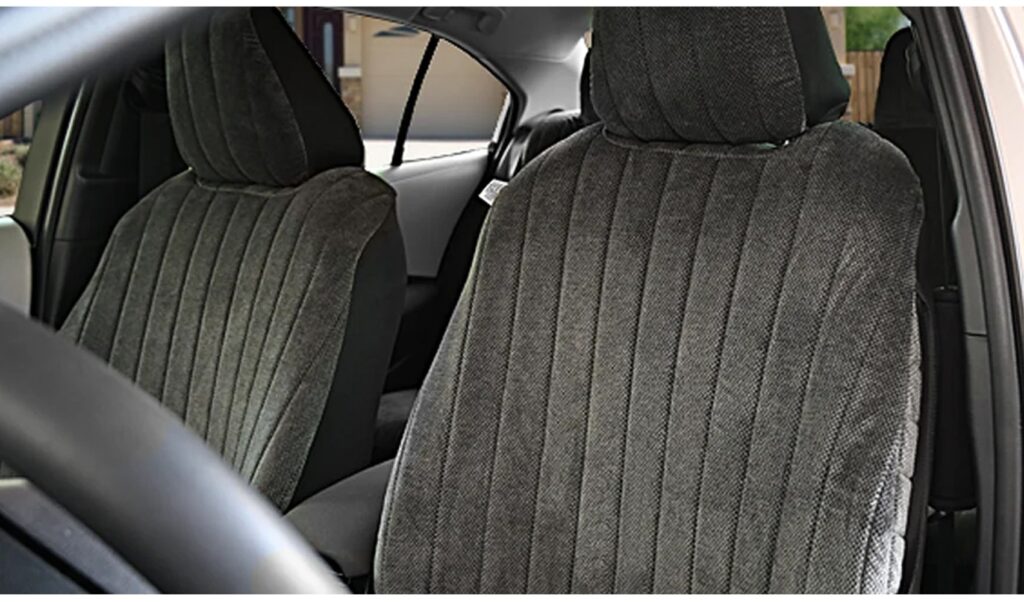
For drivers keen on installing a comfortable car seat cover made of a luxurious, velvety material, keep an eye out for velour seat covers.
This fabric is knitted and capable of stretching, making it durable and capable of adapting to fit the shape of most car seats. It’s as soft as it is sturdy, making it a solid choice for a seat cover.
Key Characteristics
- Soft and comfortable material that can be described as luxurious and velvety.
- Durable and designed to last, making it a solid choice for seat covers.
- Often stretchy and can adapt to fit the shape of most car seats.
- Warm and plush material that’s perfect for colder weather and seasons.
Neosupreme Seat Covers

Neosupreme is a more affordable alternative to neoprene. Despite its low cost, neosupreme seat covers are known for their durability.
One of its biggest advantages over other materials is that it doesn’t have a chemical smell because it doesn’t contain rubber.
Neosupreme seat covers often come with thick foam padding to maximize comfort on long drives.
Key Characteristics
- Cheaper than most material types but still built to last.
- Heavy-duty, durable, and long-lasting thanks to its thick foam padding.
- Hydrophobic and can be cleaned with nothing more than a damp cloth.
- UV-resistant and prevents fading and stains.
Polyester Seat Covers
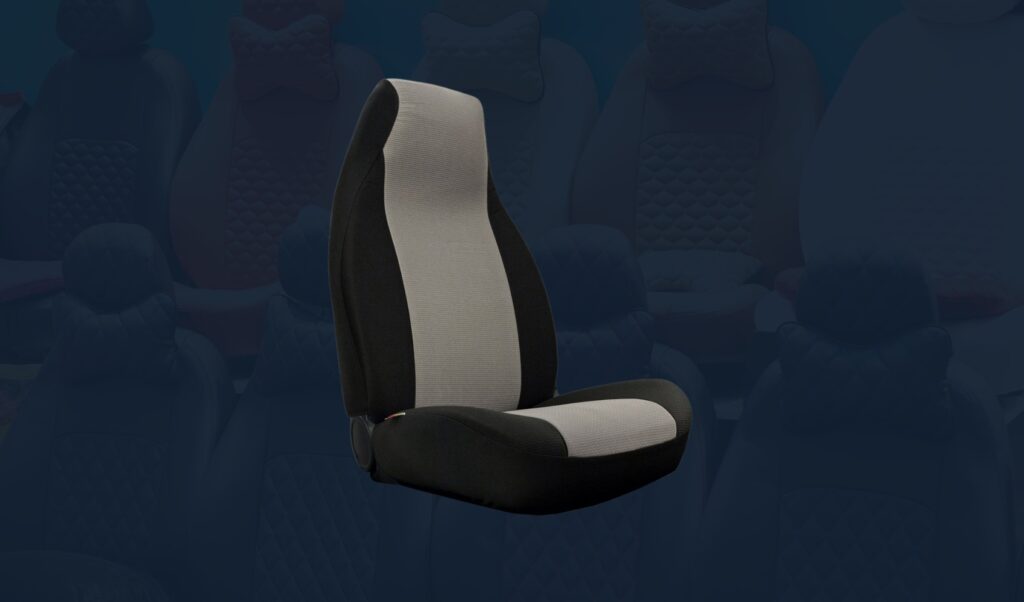
A material commonly used for clothing, polyester can also be used to make seat covers for your vehicle. The material itself is a man-made plastic made of numerous chemical compounds. This makes it incredibly durable and less susceptible to degradation brought about by heat and the weather. Polyester seat covers are also resistant to UV radiation, meaning they won’t fade easily even when left in direct sunlight.
Key Characteristics
- Strong, durable, and resistant to abrasion, stretching, and shrinkage.
- Easy to wash and dries very quickly.
- Resistant to chemical damage and can withstand the test of time.
- Moisture and wrinkle-resistant.
Spacer Mesh Seat Covers
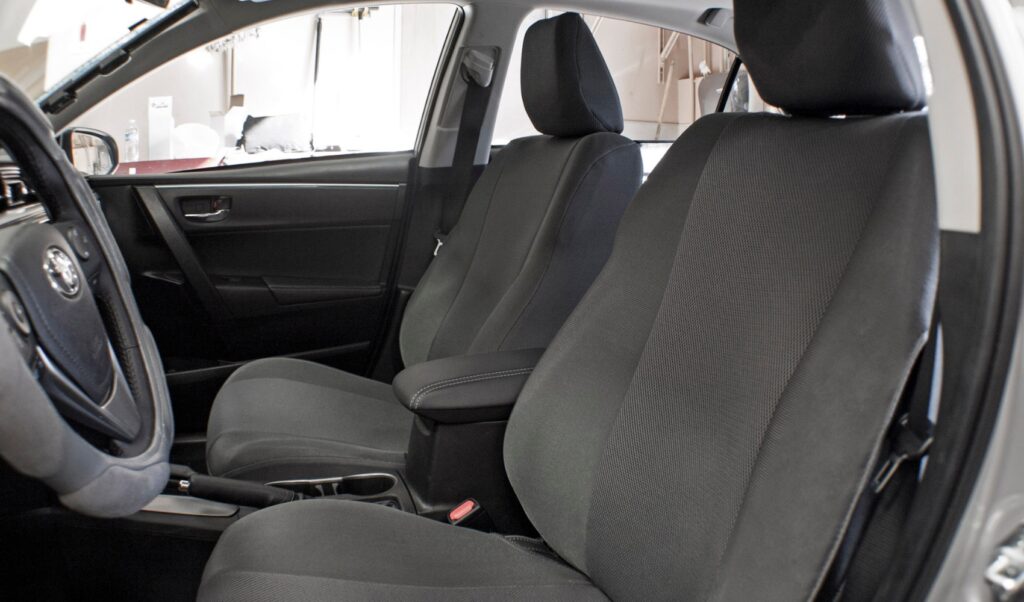
Spacer mesh is an excellent choice for drivers keen on maximizing their comfort with breathable seat covers. Spacer mesh seat covers are unique because they are made of three separate layers of fabric knitted together to create a spongy material. Not only is it durable, but it’s also cheap and offers protective padding reminiscent of foam.
Key Characteristics
- Cheaper than other materials used to make seat covers.
- A durable alternative to foam and offers just as much protection and comfort.
- Built to last, withstanding frequent use with minimal wear and tear.
- Breathable and makes for excellent cushions.
Woven Fabric Seat Covers

Woven fabrics can be made of natural fibers such as cotton or synthetic fibers, such as nylon. Woven fabric seat covers are made by interlacing two sets of yarn to form a solid, durable fabric.
Key Characteristics
- Built to withstand the test of time and resist wear and tear.
- Common and can be made of many different materials.
- Breathable and moisture-absorbing, making them cool and comfortable.
- Strong and taut, making for an excellent seat cover.
Suede Seat Covers

Suede seat covers are unique because they’re made of leather. Suede is a soft yet sturdy material that is typically made from sheepskin, cowhide, or pigskin.
The type of animal leather used affects the texture, durability, and roughness of the seat cover. Cowhide is rough and thick whereas sheepskin is soft and delicate. On the other hand, pigskin suede is heavy and durable.
Key Characteristics
- Made of leather; properties vary depending on the skin used.
- Generally tough, durable, and built to last.
- Thin, flexible, and waterproof on top of being pliable.
- Has a reputation for being luxurious and tasteful.
Any information provided on this Website is for informational purposes only and is not intended to replace consultation with a professional mechanic. The accuracy and timeliness of the information may change from the time of publication.






